How a Flute is Made
Making the keys and pad cups
The craftsman's skill in evidence
Pressing and forging
The keys are formed by flattening the constituent material at great pressure so as to increase their strength.
*Compared to cast keys, keys that have been through the forging process are stronger and more rigid, and are less susceptible to breaking.
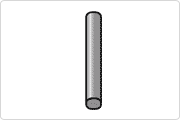
Making holes
Holes are made in the key components that go on the keys and pad cups so that the key tube can pass through them.
Trimming
The material is shaped using a tool that follows a guide having the same shape as the component. This is performed manually on high-grade, handmade models.
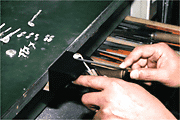
Trimming a Briccialdi key
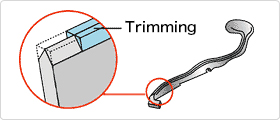
Brazing of the key components
The key components such as the keys posts and key ribs are individually brazed to the body of the flute.
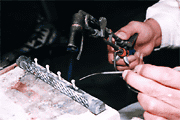
Brazing
Plating
Just like the head joint and the body, the key components are immersed in a plating solution and electroplated with silver.
Attaching the pads
A master craftsman, with expertise acquired over many years, takes his time to attach the pads one by one.
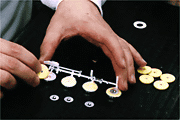
Attaching the pads
